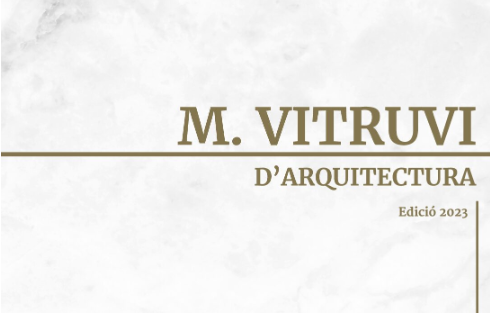Faithful to its commitment to service to the community, Ciment Català has edited and published a new digital version in the Catalan language of the work “De Architectura”, by Marcus Vitruvius Pollio, architect, engineer and writer from the 1st century BC, improving some aspects that they were pending in the previous one. This treatise is considered the first known book on construction and only the texts are known, not the figures, which each subsequent author who has edited the book has produced interpreting the text.
This 2023 digital edition incorporates the corrected text from the 2022 Ciment Català digital version but includes all the figures from Jean de Tournes’ Geneva edition of 1618. The images have been digitally enhanced to eliminate erroneously tinted backgrounds produced by the passage of time, as well as to redefine some lines and curves that had been, for the same reason, deformed and poorly defined. Furthermore, the 2023 edition places the figures in the most appropriate place according to Vitruvius’ original text.
The adaptation that is now coming to light is available online for free and has taken as a reference the commemorative edition of the tenth anniversary of the entity in 1989, although the texts and images they illustrate have been completely revised. Some errors in the text have also been corrected, the writing style has been carefully retouched and parts that had not been in the correct order of chapters and sections have been adapted.
The reissue is not exactly a facsimile of the 1989 one, since the original text had to be scanned and recognized and then corrected, trying to reproduce the same original format and aesthetics. The document has also been adapted to make the book in digital format available to everyone, printable in DIN A4 or proportional size, more convenient to use.
Marcus Vitruvius Pollio was born around the year 75 BC. C., and died around the year 10 BC. He was, without a doubt, a very prominent figure and what he left us is the first written document of which there are traces on architecture and engineering in its various branches, since at that time there was no such clear distinction as between different professions and trades.

